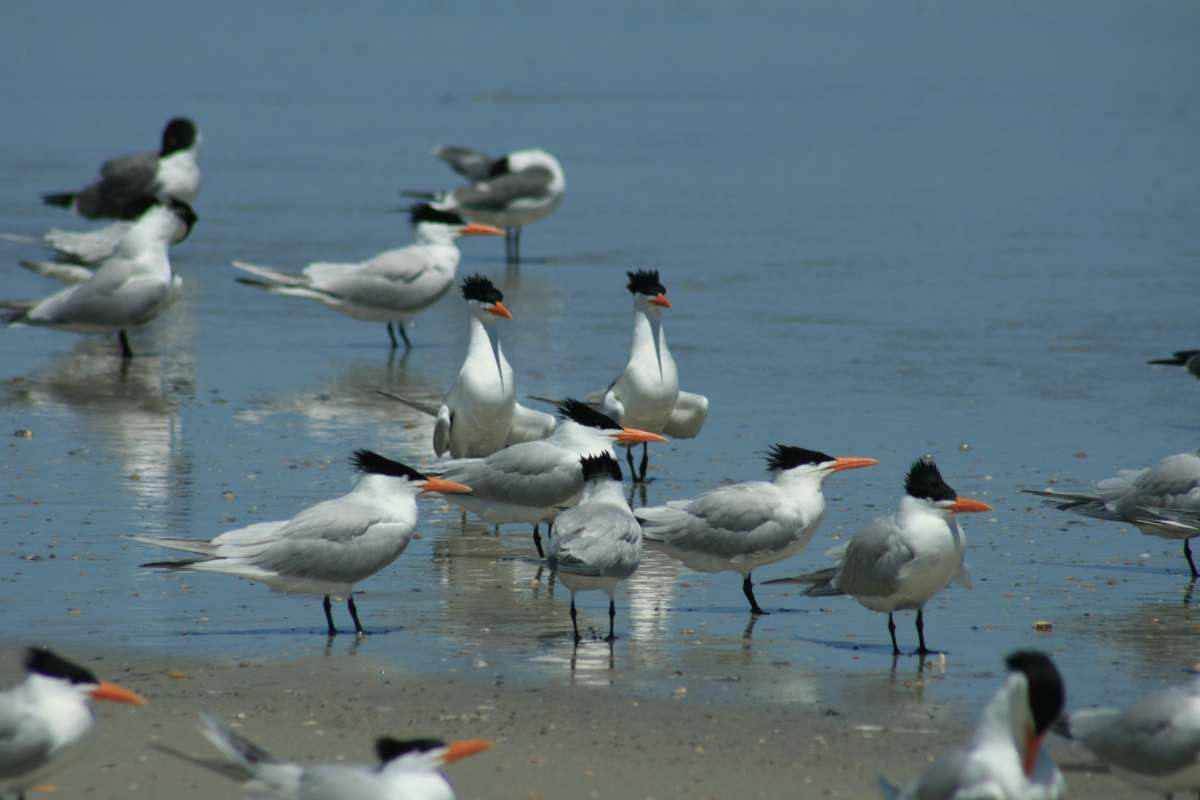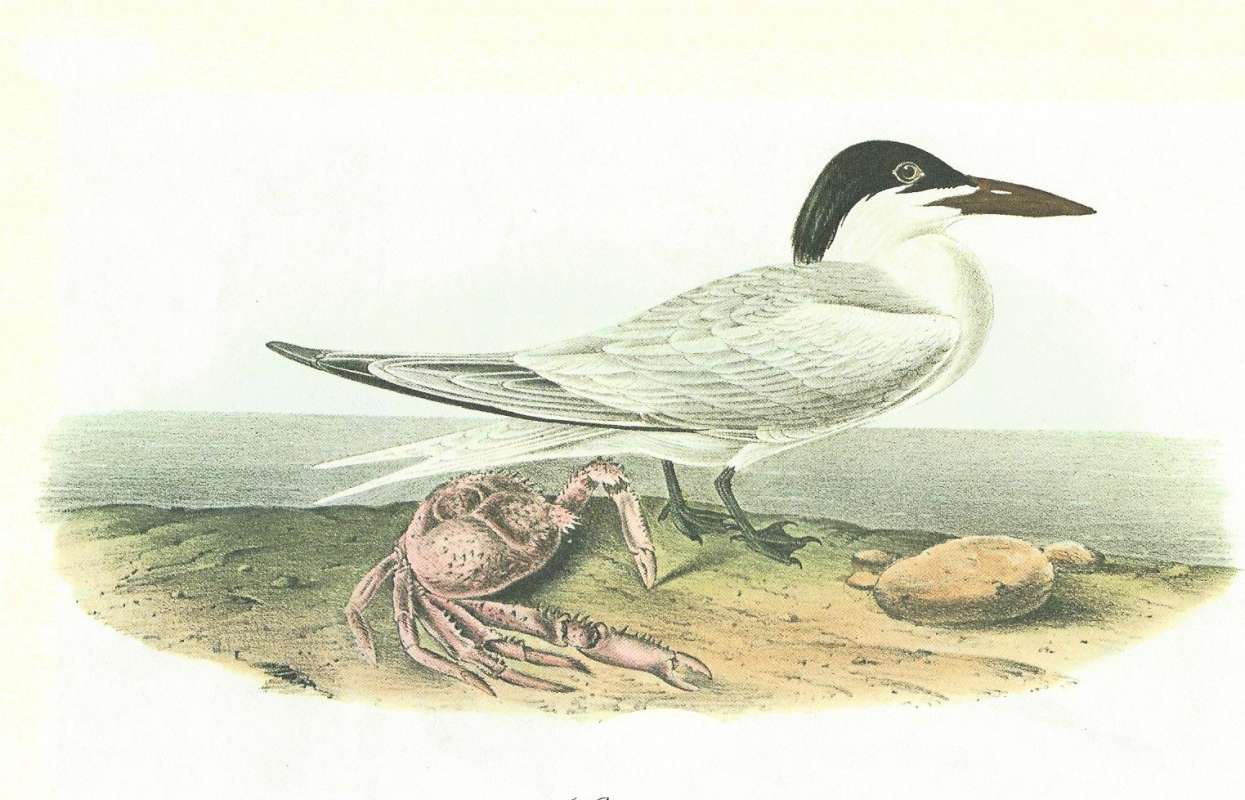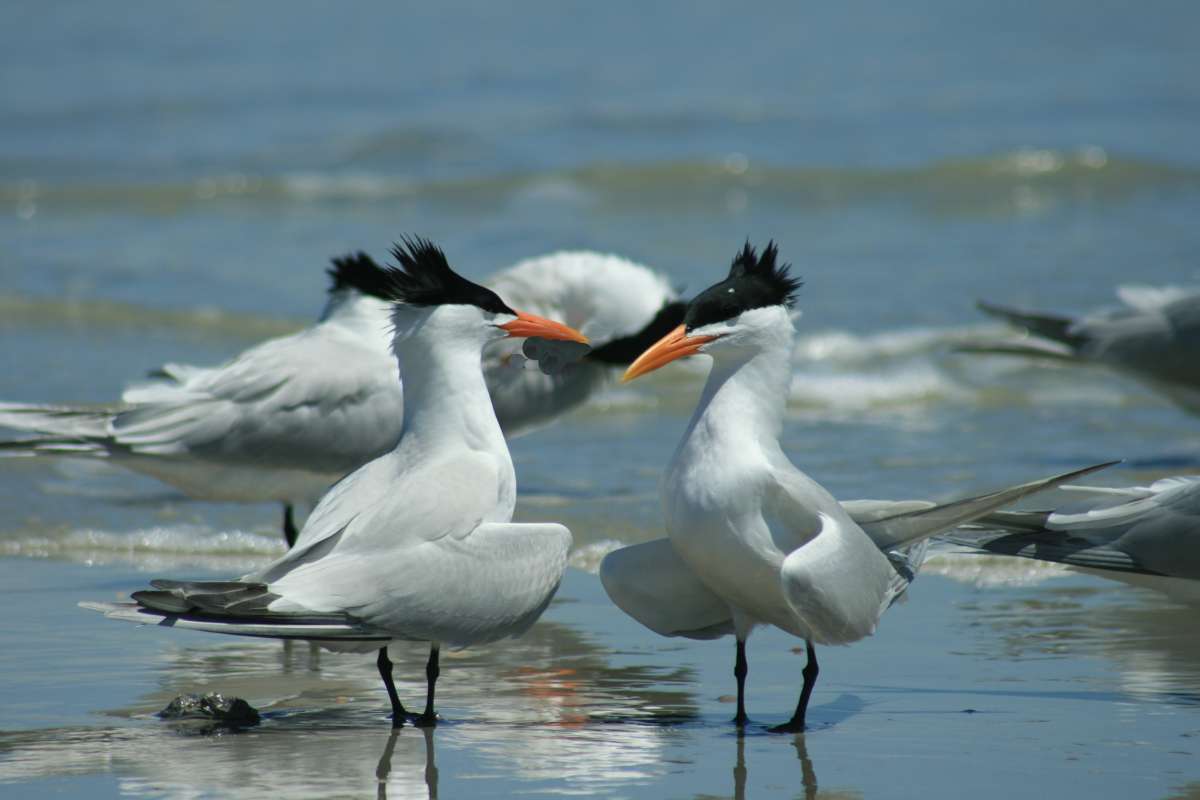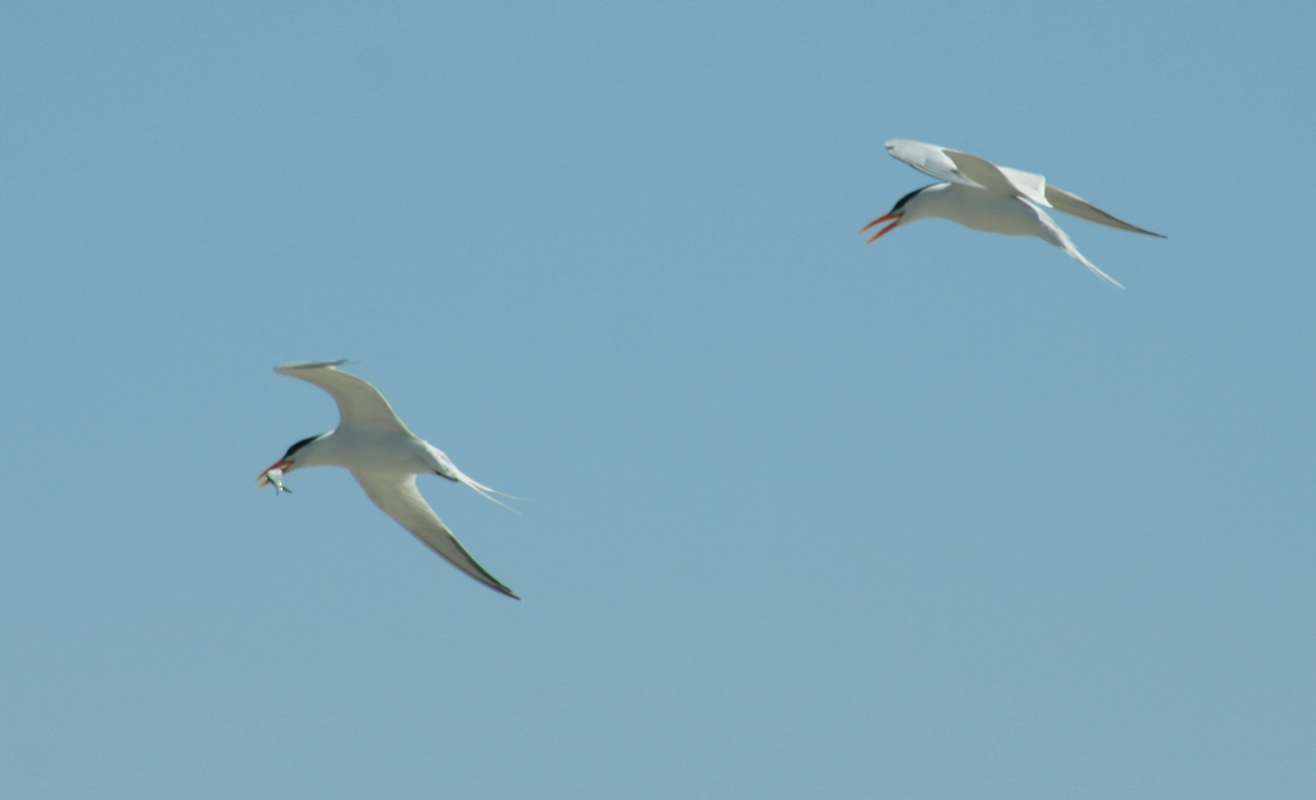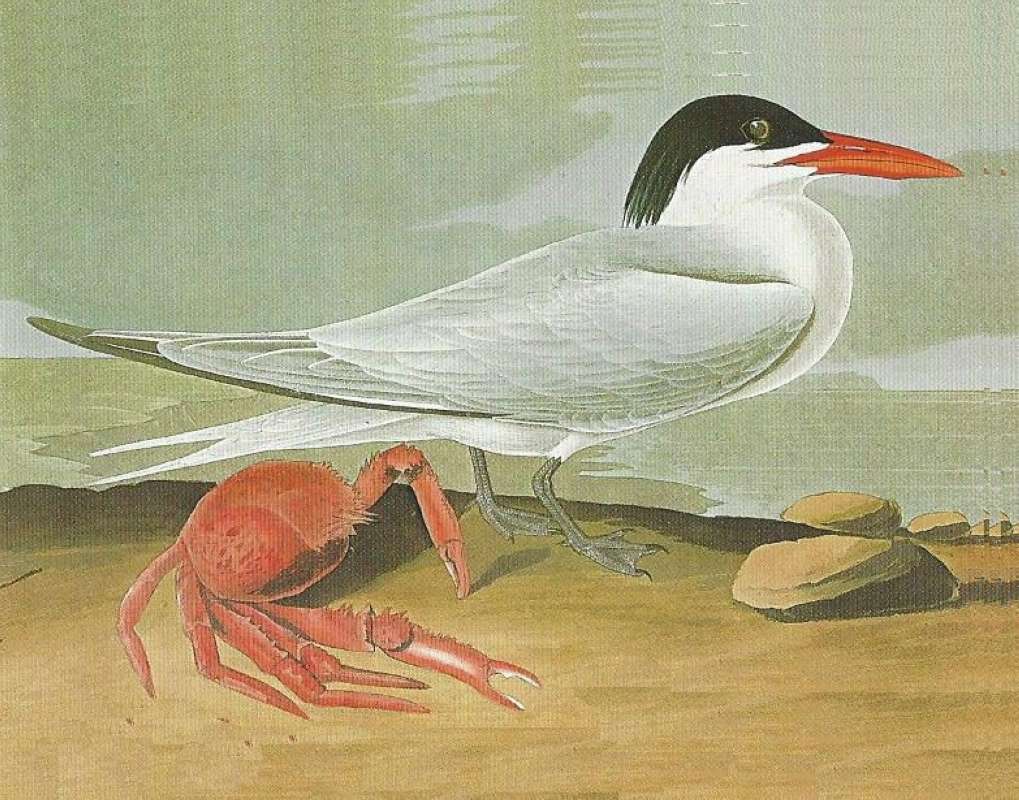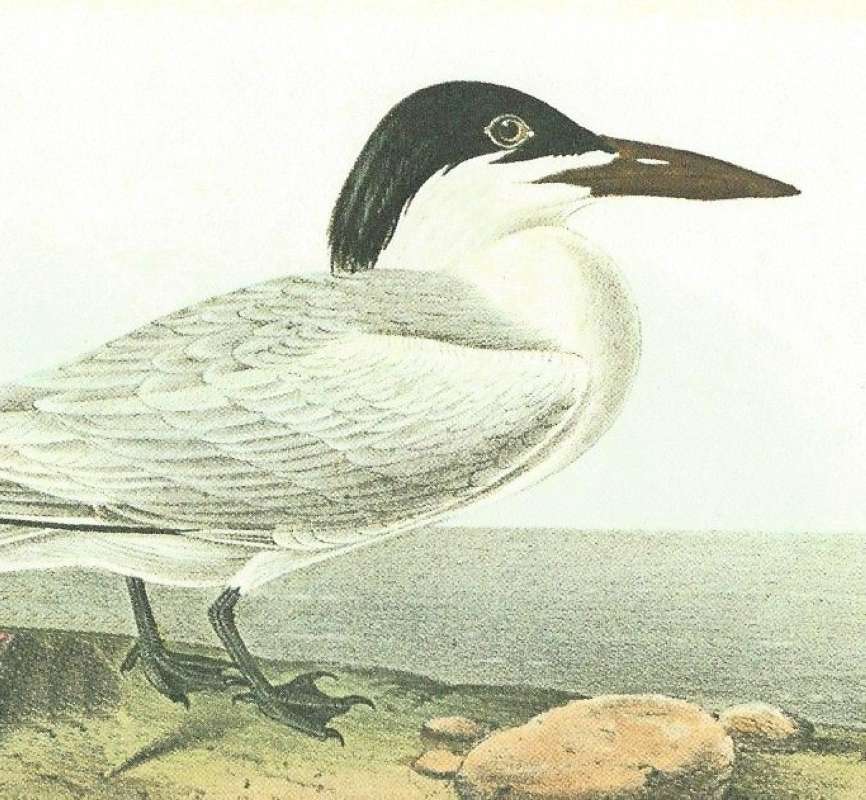SPECIES INFO
Royal Tern (Thalasseus maximus equal Sterna maxima) is found widely in the world. In the United States, it is found in the east from Virginia to Texas, and in the west from California to Chile. It is also found along the west coast of Africa. Royal tern is also found in Argentina and Uruguay. The forked tail helps identify this species. It measures eighteen to twenty-one inches in length.Terns (Subfamily Sterninae) are closely related to the Gulls. The forked tails of most of the adult terns will usually separate them from the gulls, although the Ross's Gull species also has a forked tail. Many terns also have a black "cap" on their heads. There are about 44 species in this group with another 3 subspecies that can be recognized as full species. The Sterna, Chlidonias, Phaetusa, Anous, Procelsterna, Gygis, and Larosterna genera belong here.
Gulls (Family Laridae) are composed of 43 species of shorebirds that are excellent fliers. The gulls and terns are frequently combined into a single family, but some authors separate them into two families. The two family approach is used here.
Shorebirds (Order Charadriformes) are a group of 305 species of worldwide birds. While good fliers, they are much observed feeding along seashores and in the vicinity of inland bodies of water. Seagulls and sandpipers are typical representatives of this order.
There are many different families herein, and most authors end up with about 18 different families. Other groups included herein include the plovers, curlews, coursers, oyster catchers, jacanas, terns, phalaropes, plovers, stilts and avocets, skimmers, snipes, jaegers, and auks and puffins.
Aves contains about 8,650 different species of living birds known to science. Each year about one new species is discovered in some remote rain forest or remote island. In addition, scientists have been raising many subspecies to full species status which may raise the species count to 10,000. Birdlife recognizes 10,027 species as of 2011.
However, each year about one species goes extinct. The rate of extinction is increasing, and the rate of new discovery is decreasing, so that the number of bird species will soon begin to decline rapidly. Although different taxonomists would organize the birds differently, there are approximately twenty-seven orders of birds. These orders are broken down into about one hundred and fifty-five different families.
Recent research of the genetic structure of some of the shore birds and owls would indicate that the present organization of orders and families should have some modification.
The birds are a worldwide group of animals that are characterized by having the front limbs modified into wings that are used for flying. Perhaps the most unique feature of the birds is the feathers. These feathers are made up of a central support called a quill and a series of small filaments that are hooked together as barbs.
For many years it was believed that Archaeopteryx discovered in Bavaria was the oldest bird from about 150 million years ago. However, in l986, Sankar Chattterjee, a Texas paleontologist, reportedly discovered a bird in the genus Protoavis that lived about 225 million years ago.
When this project was begun in 1978, we used Austin & Singer for bird taxonomy. Since then, we have adopted many changes, but have kept some older concepts that are still found widely in the literature. Recently, we have used Clements and Howard & Moore. Very recently, we have used Monroe and Sibley for the higher taxonomy of the perching birds.
Backboned Animals (Phylum Chordata) are the most advanced group of animals on earth. These animals are characterized by having a spinal cord or backbone. Most members have a clearly defined brain that controls the organism through a spinal cord. Fish, amphibians, reptiles, birds, and mammals are in this phylum.
Currently, some taxonomists believe that the fish should be divided into two groups (sharks and regular fishes) and that there are some other primitive groups in the phylum such as hagfish or lampreys.
Animal Kingdom contains numerous organisms that feed on other animals or plants. Included in the animal kingdom are the lower marine invertebrates such as sponges and corals, the jointed legged animals such as insects and spiders, and the backboned animals such as fish, amphibians, reptiles, birds, and mammals.


